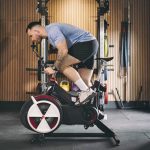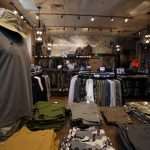In an attempt to be “fair and balanced”, we thought it would be interesting to look at the footwear results for the first 6 months from 4 different perspectives: the financial results of major public footwear retailers, SportsScanINFO data, NPD data and our own collection of admittedly anecdotal reports. Somewhere in these numbers is the right one.
Gentle reader, well let you decide.
First the public company numbers. When SEW reviewed the results provided by the public companies, it became clear that the first half of the year was a difficult and trying one for most footwear sellers. (Look for next weeks issue for a look inside the numbers).
Comp sales were down in the mid singles. All channels reported difficult overall sales. Only those retailers who benefited from the Nike redistribution strategy performed significantly above last year on a comp basis. However, because of the continued growth in overall square footage, total sales were flat to last year for the quarters reported to date.
Most public companies reported downward pressure on average selling prices, as the promotional environment and shift to retro styles took their toll.
The SportsScanINFO data (through 8/17/03) gives a different perspective. Based on the stores measured, the sales trend was more challenging. Deflation is a huge factor, according to SSI.
SSI reports that units YTD are down in the low single digits, while dollars are down in the high single digits. Average selling price is down in the mid single digits and is declining on a monthly basis.
The trend is best in the “mall specialists” where overall the sales trend is down in the low single digits and units are essentially flat to last year. The “strip specialists” (essentially the value channel retailers) are having the worst time of it. In these retailers, the sales trend is down in the teens, while units are only down in the low singles. Price deflation is the whole reason for the sales decline here.
Full line stores fall somewhere in the middle, with sales down in the high singles, on a low singles unit decline.
Running footwear is deemed the largest category measured by SSI, with just over a 25% contribution, but casual footwear, which includes many of the classic and retro styles, is right behind with nearly 24% share. Basketball is third with 18%.
NPDs study, as reported by SGMA, presents yet another look. The NPD data is based on both POS information as well as customer surveys and includes the mass retailers. NPD reports that sales for the first half are relatively flat in both dollars and units. Hence, average price has only dropped in the low single digits.
NPD also reported that while sales were down versus last year in the first quarter, spending rebounded in Q2, resulting in a flat first half. NPD says that Running, the largest category, was essentially flat to last year, while Basketball, their second biggest category, was up in the teens versus one year ago.
Our own conversations with retailers, small and large, public and private, as well as key vendors, indicate that the footwear business was very challenging in the first half as lackluster fashion trends and the soft economy both impacted sales and traffic. Deflation is of serious concern and there does not seem to be an easy fix to that problem.
On the bright side, all of our recent conversations indicate that traffic and transactions are improving in the early back to school period.
>>> Lets hope we can hang onto that trend
>>> It was a rough spring for footwear no matter how you look at it.















